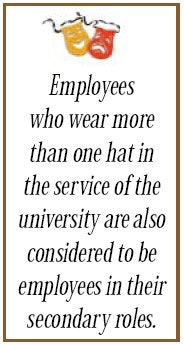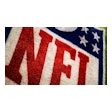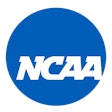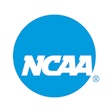An on-stage stabbing offers lessons for athletic departments.

A recent case decided by the Texas Supreme Court, Bishop v. Texas A&M University [2000 Tex. LEXIS 68 (June 29, 2000)], discussed the vicarious liability of a university when faculty members serve in nonacademic roles. Although the facts of this matter arose out of a drama-club setting, the case has implications for collegiate and high school athletic departments that use advisors or volunteers who are paid employees of the university or school in another capacity.
Paul Bishop, a student at Texas A&M, was injured while playing the role of Vlad the Impaler in a drama club performance of "Dracula." A fellow student missed the stab pad attached to Bishop's chest and stabbed him with a Bowie knife.
Bishop sued under the Texas Tort Claims Act, alleging that the four people overseeing the production were negligent in failing to enforce a university prohibition against deadly weapons on campus. He alleged that the university should be vicariously liable for the actions of these people-two of whom were community members assisting with the production, and two of whom were faculty members serving as the drama club's faculty advisors. A jury found that all four individuals were acting as university employees when the incident occurred and that their conduct was negligent.
This decision was reversed by an appeals court, which held that while the community members were independent contractors, the faculty members-although in the paid service of the university within their academic positions-were volunteers in the role of faculty advisor. The court of appeals therefore held that the university was not vicariously liable for the faculty members' negligent actions.
The Texas Supreme Court, however, disagreed, ruling that the faculty members were university employees at the time of the incident. The court declined to address the status of the two community members, since it found the university to be vicariously liable due to the actions of the faculty advisors, and remanded the case for further proceedings.
In its rationale, the state supreme court refused to adopt the distinction made by the appeals court as to the faculty advisors' academic and nonacademic roles. The appeals court had concluded that the faculty members, when functioning as drama club advisors, were volunteers-since they were not in the university's paid service except in their academic role.
The supreme court noted that despite the fact that the two faculty members were functioning in a nonacademic capacity, their responsibilities to the university were still in place. Faculty advisors must be obtained, commented the court, for all officially recognized student organizations, and the advisors must know the rules pertaining to student organizations, be aware of liability issues and advise the organization to make reasonable and prudent decisions when planning activities. Faculty advisors therefore are responsible, concluded the court, for enforcing university policies and procedures.
The court also stated that although the faculty advisors did not receive additional remuneration for their service to the drama club, this fact was not dispositive of their employee status. Rather, the evidence supported the conclusion that the faculty members remained in the paid service of the university in their advisory roles to the drama club, and the university received a benefit from their advisory positions.
An interesting aspect of the Bishop case is not that the Texas Supreme Court found that the faculty advisors were indeed employees of the university, but rather that the issue managed to find its way to the state's highest court. Although the case was brought under the Texas Tort Claims Act-with its definition of "employee" as "a person, including an officer or agent, who is in the paid service of a governmental unit"-it seems clear that either under the Act's definition or under general common law principles, the faculty members in this case were acting to further the business of the university as they served the drama club as official advisors.
The faculty members' service to the university in this capacity was certainly beneficial to the university and to the drama club's student members. The fact that the faculty members were functioning in a nonacademic capacity was irrelevant, since they were acting in the paid service of the university.
The Bishop case offers an illustration of the doctrine of respondeat superior, and emphasizes the underlying considerations regarding vicarious liability.
Respondeat superior holds an organization responsible for the actions of its employees, not because of any wrongdoing on the part of the employing organization but because the law has deemed it appropriate for the employer to be held financially accountable for the actions of its employees. As a policy matter, this doctrine is based upon the belief that the employer is in the best position to control the actions of its employees and therefore should be accountable if the employee is negligent while doing his or her job. The employer should assume this liability as a cost of doing business.
The general rule of respondeat superior is that an employer will be vicariously liable for the acts of an employee that are performed within the scope of employment. These acts are performed to advance the business of the employer-and thus, the negligent act of the employee performed within the scope of employment is imputed to the employer.
The doctrine, however, does not extend to cover any act of an employee done at any time. Most intentional torts are, by their nature, outside the scope of employment, and therefore not imputed to the employer.
The Bishop case serves as a reminder to athletic department administrators that those employees who wear more than one hat in the service of the university or school are also considered to be employees in their secondary roles. It is not uncommon to "recruit" a faculty member or athletic department support staff employee to serve as an advisor to a club or cheerleading team, to cite just two examples. If these individuals act negligently within their advisory roles, the university will also be liable under principles of vicarious liability.
These types of situations also raise the issue of negligent hiring or selection, since it is incumbent upon the administrator who chooses club-team or cheerleader advisors to do so as a reasonably prudent person. The administrator must, therefore, assess whether the prospective advisor has the qualifications and competence to serve in the advisory capacity.
If the administrator breaches the standard of care in the choice of an advisor by selecting an unqualified candidate, resulting in harm, the negligent hiring by the administrator will be imputed to the university under respondeat superior principles.
It appears that the ramifications of liability based on negligent hiring may be overlooked Athletic department personnel who persist in choosing cheerleader advisors based on their availability rather than on any demonstration of their ability to supervise an activity that poses severe risk of injury.
Finally, since vicarious liability becomes an issue only when an employee acts negligently within the scope of employment, athletic departments should take their risk-management programs seriously to prevent, insofar as is possible, injuries that result from employee negligence.
All activities, of course, carry inherent risks of injury, but much can be done to prevent injuries resulting from poor supervision or incompetent instruction.
































